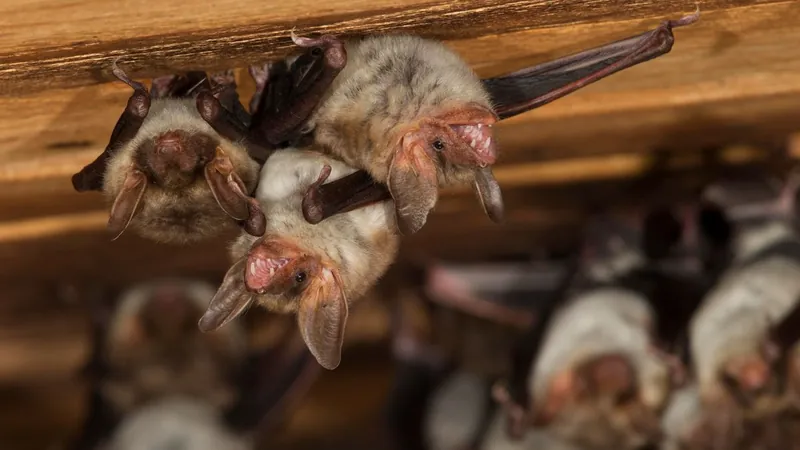
Cannabis Growers Alert: Bat Guano Fertilizer Linked to Fatal Infections in New York
2024-12-16
Author: Daniel
Introduction
In a shocking turn of events, two men in Rochester, New York, tragically lost their lives after contracting a rare fungal infection linked to bat droppings they intended to use as fertilizer for their cannabis plants. This unusual case highlights a significant danger lurking in the trend of using bat guano, often marketed as a natural boost for crops, particularly amidst the increasing popularity of home cannabis cultivation.
The Tragic Cases
The deceased, aged 59 and 64, each shared a passion for cultivating their own cannabis for personal use. They unwittingly inhaled spores from the fungus Histoplasma capsulatum, which is commonly found in bat guano, leading to a severe lung infection known as histoplasmosis. The younger man had bought guano online, while the older gentleman found a stash in his attic after battling a heavy bat infestation.
Symptoms and Outcomes
Patients suffering from histoplasmosis can experience severe symptoms, including fever, chronic cough, significant weight loss, and even respiratory failure. Despite being hospitalized and receiving antifungal treatment, both men succumbed to their infections, a tragic outcome reported in the journal Open Forum Infectious Diseases.
Increased Awareness Needed
Healthcare professionals emphasize that these cases should raise awareness about the potential dangers posed by bat guano as a fertilizer. As cannabis grows in popularity due to recent legalization measures across various states, the allure of using natural fertilizers may lead more home growers to overlook safety precautions. The report warns, 'Given the expected increase in home cultivation of cannabis, it is essential to inform the public on the risks associated with bat guano.'
Understanding Histoplasmosis
Histoplasmosis is primarily contracted by inhaling the spores from contaminated materials, particularly soil or droppings, and while it is generally rare, it can be deadly in individuals with pre-existing conditions or weakened immune systems. In fact, approximately 1% of people exposed to H. capsulatum will develop symptoms, and 5% to 7% of those hospitalized may not survive.
Call for Safety Guidelines
These recent fatalities also point to the urgent need for safety guidelines. The authors of the case report called for commercial fertilizers containing bat guano to undergo testing for bacterial contamination before entering the market, or at the very least, include warning labels and usage instructions for safe handling.
Recommendations from CDC
The Centers for Disease Control and Prevention (CDC) suggests avoiding actions that increase exposure to the fungus, such as cleaning areas with potentially large concentrations of bat droppings or exploring caves, and recommends professional removal of contaminated materials.
Conclusion
As the cannabis community continues to grow, it’s vital for growers to be informed about the risks associated with seemingly harmless natural fertilizers. The tragic cases in Rochester serve as a grim reminder: when it comes to cultivating cannabis and using fertilizers, safety should always come first.

 Brasil (PT)
Brasil (PT)
 Canada (EN)
Canada (EN)
 Chile (ES)
Chile (ES)
 Česko (CS)
Česko (CS)
 대한민국 (KO)
대한민국 (KO)
 España (ES)
España (ES)
 France (FR)
France (FR)
 Hong Kong (EN)
Hong Kong (EN)
 Italia (IT)
Italia (IT)
 日本 (JA)
日本 (JA)
 Magyarország (HU)
Magyarország (HU)
 Norge (NO)
Norge (NO)
 Polska (PL)
Polska (PL)
 Schweiz (DE)
Schweiz (DE)
 Singapore (EN)
Singapore (EN)
 Sverige (SV)
Sverige (SV)
 Suomi (FI)
Suomi (FI)
 Türkiye (TR)
Türkiye (TR)
 الإمارات العربية المتحدة (AR)
الإمارات العربية المتحدة (AR)